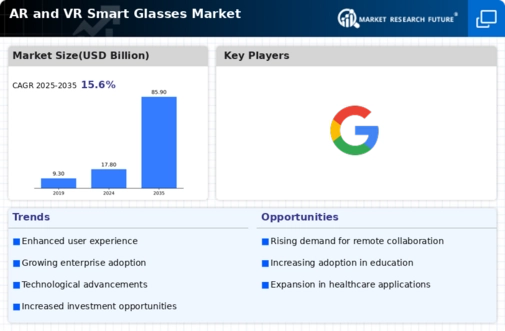Market Trends
Key Emerging Trends in the AR VR Smart Glasses Market
The continuous alterations in consumer and corporate demands and growing tastes are reflected in the market trends of AR and VR smart glasses. The growing use of AR and VR technology across a range of industries is one noteworthy trend. Smart glasses are being used by the healthcare, education, and manufacturing sectors to improve training programs, enable remote collaborations, and increase overall operational efficiency. This pattern suggests that augmented and virtual reality are becoming more widely accepted as useful tools in the workplace. Market trends are also being shaped by consumer tastes; there is an increasing need for smart glasses that are lighter, more portable, and more fashionable. In response to this trend, manufacturers are emphasizing wearability, comfort, and beautiful design. The trend toward more user-friendly designs is opening up AR and VR smart glasses to a larger market and fostering a surge in usage outside of the conventional corporate market. In addition, the industry is seeing a boom in the creation of AR and VR content. Immersion and interactive content production is rising in tandem with the number of businesses realizing the possibilities of these technologies. This content is divided into several categories, such as entertainment, education, and gaming. One of the main factors luring customers and companies to invest in AR and VR smart glasses is the availability of varied and captivating content. Another noteworthy development in the business is partnerships and collaborations between tech firms and content providers. Through these partnerships, hardware and content development will work together more effectively to provide users with a smooth and interesting experience. In addition to encouraging creativity, these collaborations are helping the AR and VR industries expand as businesses combine their resources and knowledge to further develop the capabilities of smart glasses. Furthermore, there is a tendency in the industry toward increased connection and device integration. As smart glasses link to smartphones, tablets, and other Internet of things devices, they are progressively becoming a part of larger ecosystems. The user experience is made more seamless and coordinated because to this connection, which also increases the capabilities of smart glasses beyond those of standalone devices.



Leave a Comment